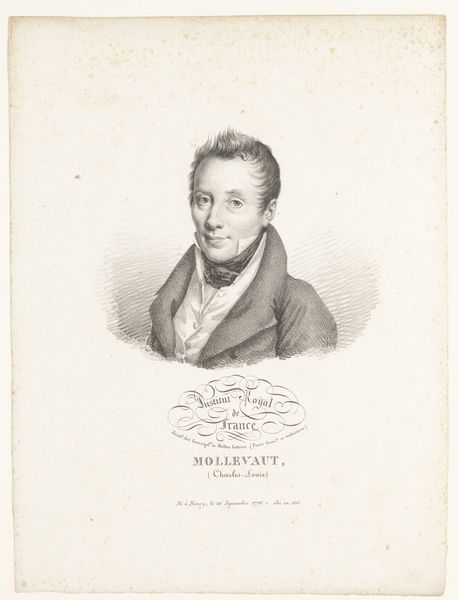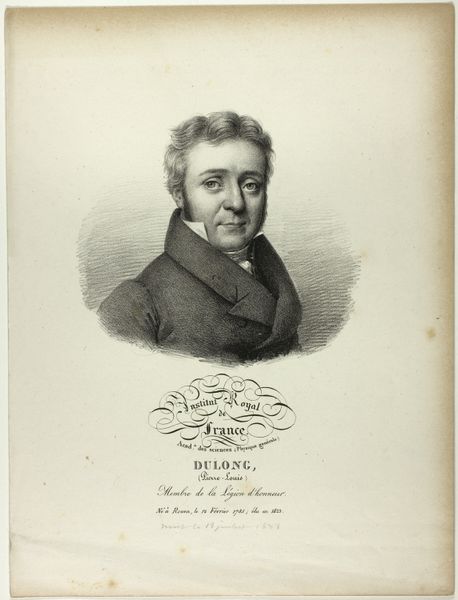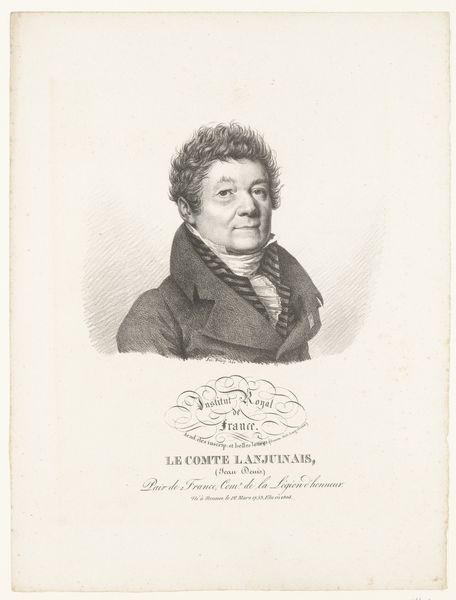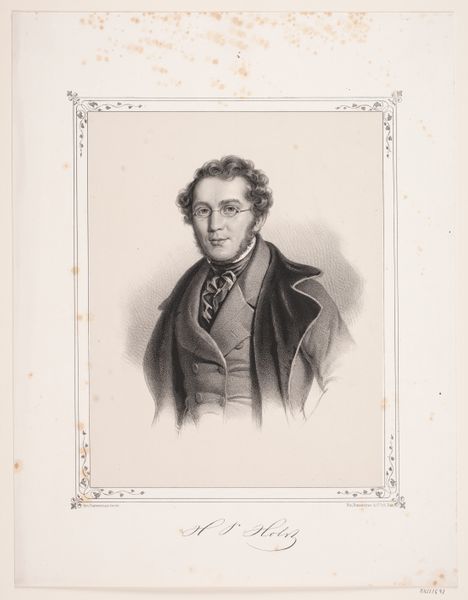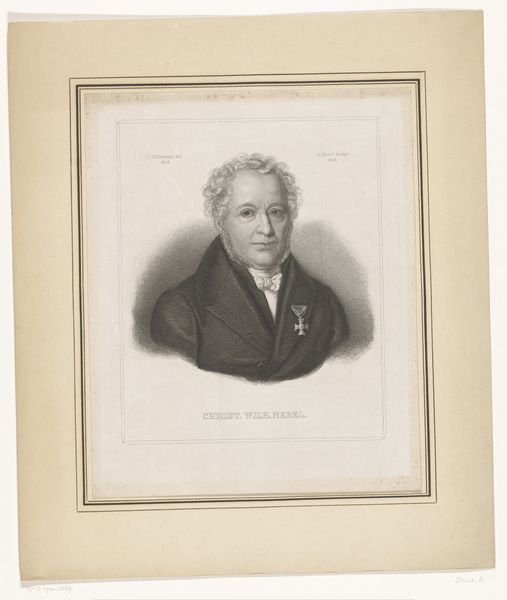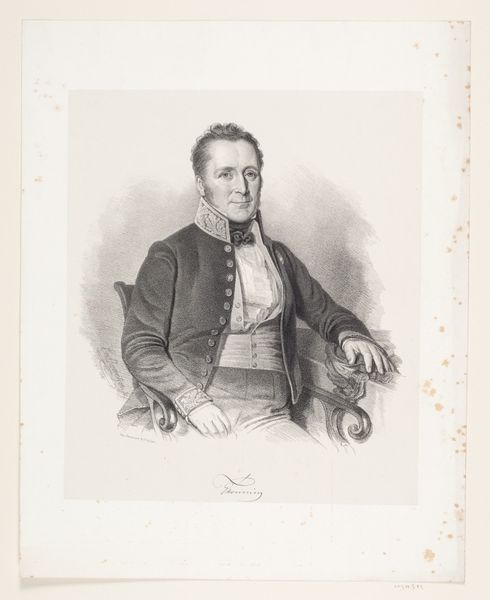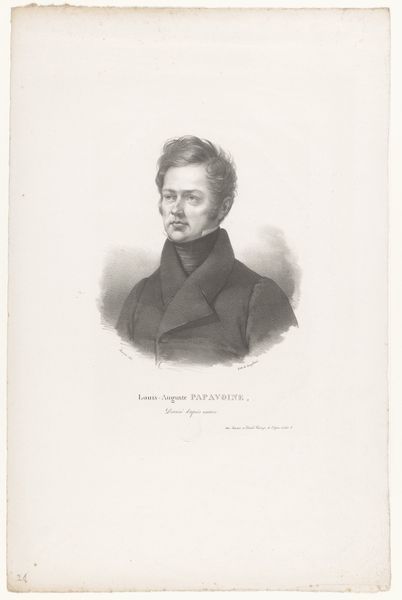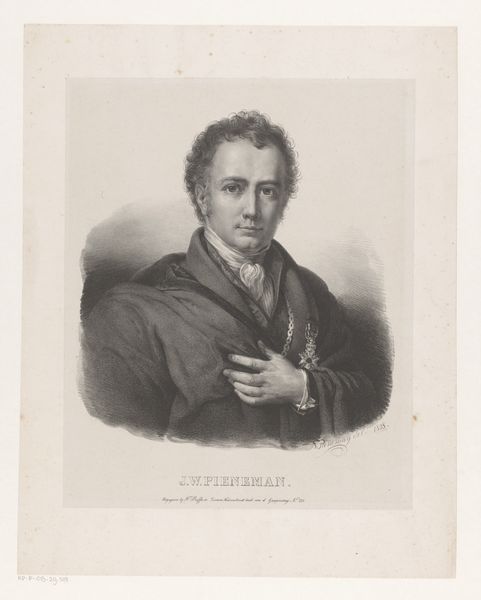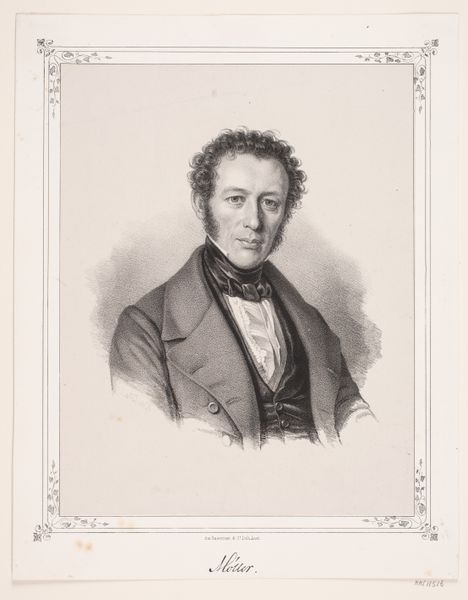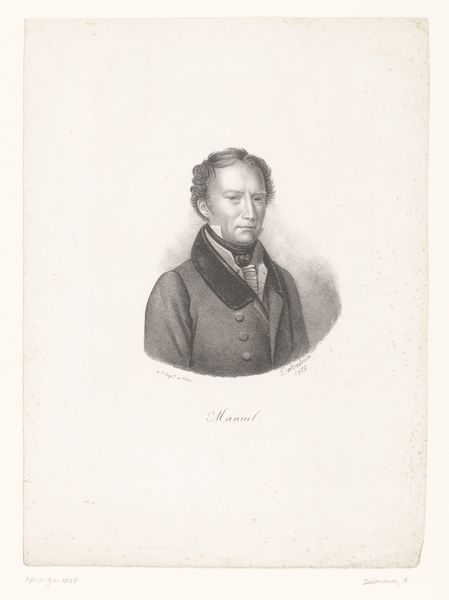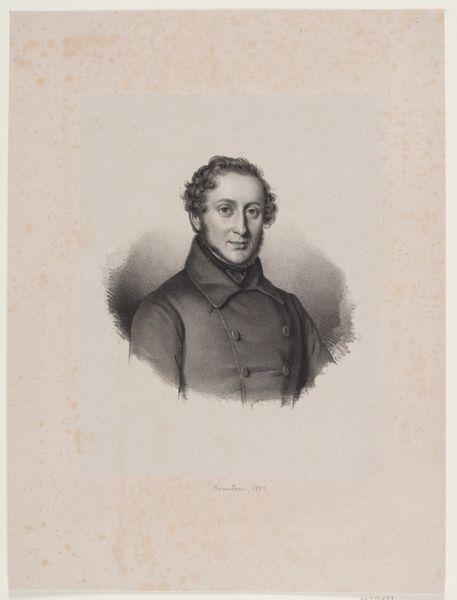
lithograph, print
#
portrait
#
lithograph
# print
#
portrait reference
#
romanticism
#
portrait drawing
#
portrait art
Dimensions: 409 mm (height) x 281 mm (width) (bladmaal)
Curator: This is "Blok Tøxen," a lithograph portrait created between 1828 and 1832 by N. Chr. Kierkegaard. The artwork is currently held in the collection of the SMK, Statens Museum for Kunst. What are your first thoughts? Editor: Austere. There is an almost defiant posture. The crossed arms, the upward gaze – there's a sense of contained energy here. It’s certainly a very proper, controlled image. Curator: Kierkegaard worked in a Denmark grappling with significant social and political upheaval. We can see an interest in representing the individual, characteristic of Romanticism, though through the newly accessible medium of lithography which was very current. This piece speaks to a democratization of portraiture. Editor: I see the symbolism of resilience and intellectual strength in that determined gaze. But is it possible the arms signify perhaps resistance or a man guarded? We can ask, what symbols or meanings was Tøxen intending to convey to a broader Danish public? Curator: Precisely! Tøxen held a government role with authority to change laws which tells us about his political positioning. This lithograph had cultural and social meaning for a particular audience. The rising middle class now had the chance to align themselves with elite society. Editor: Absolutely. Lithography allowed for wider distribution of images like these and allowed new strata to assert their positions and participate more fully in public. Tell me more about the pose. I find it hard to ignore. Curator: Arms crossed indicates status and power in the 19th century. To present oneself in this way speaks volumes of self-confidence. It can certainly suggest self-sufficiency or an attempt to establish the figure’s position amidst social uncertainties. Editor: So, while appearing to be a straightforward portrait, the artwork served multiple layers, presenting Tøxen, inviting social discourse and allowing wider dissemination to people eager to align themselves with Danish power structures of the time. It seems so simple on the surface, but so rich beneath! Curator: Exactly. The simplicity of the lithographic medium and controlled pose is only a window into the dynamic social landscape that shaped its creation and reception.
Comments
No comments
Be the first to comment and join the conversation on the ultimate creative platform.
